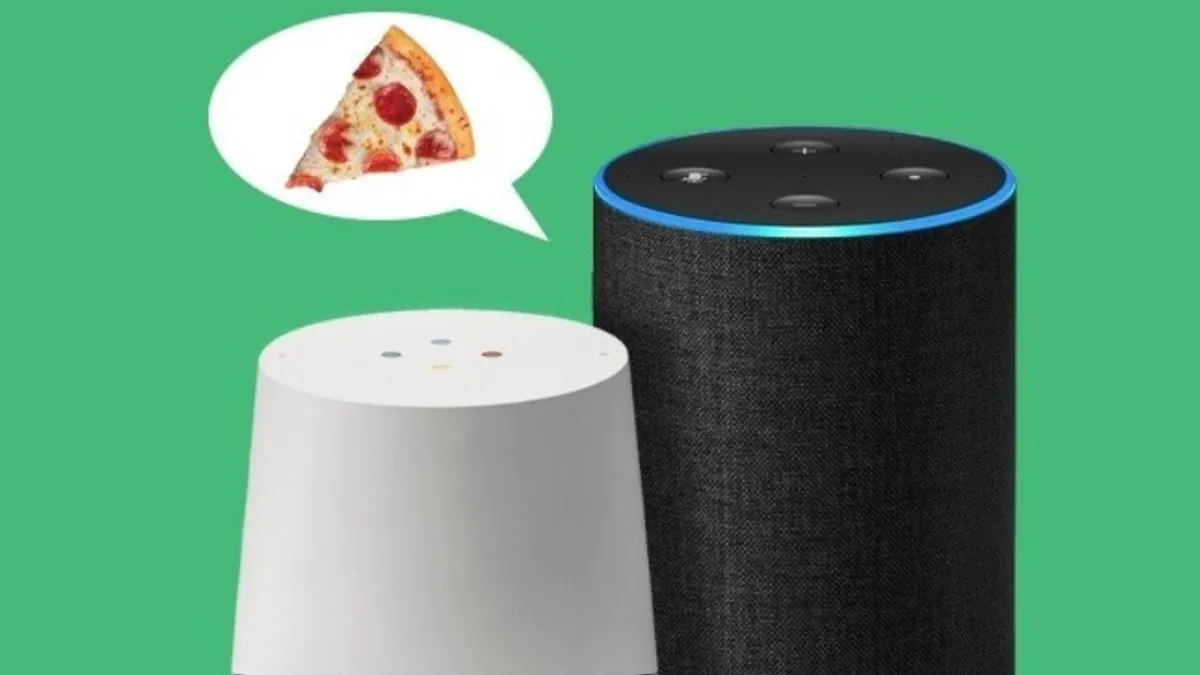As consumers increasingly turn to voice-based assistants on phones and computers to handle various aspects of their lives, the technology is emerging as a new frontier in the unfolding digital relationship between shoppers and food retailers.
Allowing people to use their voices to place orders, locate products in stores and even get menu suggestions holds deep promise for the grocery industry. But voice-driven systems pose a series of challenges that are gaining attention as grocers look for ways to integrate the technology into their businesses, panelists said Tuesday during a session at the virtual FMI Midwinter Executive Conference. Topping the list are concerns related to data privacy, consumer trust and building interoperability between different systems so that people can interact with a grocer regardless of the platform they choose to use.
But while voice-based technology comes with a host of complexities, the fast-growing popularity of systems like Amazon’s Alexa and Google’s Assistant means retailers who choose not to embrace the concept may come to regret that decision, said Doug Rogers, chief security officer of Wegmans.
“Voice control is not a fad, and in a very short period of time, we're going to find that it's going to be the No. 1 way our customers want to interact with our organization ... I think that this is really the perfect time to get in on the ground floor and help mold these standards,” Rogers said.
Technology that lets people interact with automated systems by speaking has the potential to allow retailers to bring unprecedented levels of convenience and customization to their relationships with shoppers. For example, a customer might be able to ask a store’s system to recommend a dinner menu, select and order the necessary ingredients and schedule them for delivery, Rogers said.
Jon Stine, executive director of the nonprofit Open Voice Network, which is helping to develop technical standards and ethical use guidelines for voice-based systems, said the stakes are especially high given that systems like Amazon’s Alexa and Google’s Assistant are growing fast in popularity among consumers. In addition, technology vendors offer the ability for companies to develop custom systems to interact with people.
In particular, grocers stand to build lasting relationships with consumers by using voice technology to personalize the grocery-shopping experience, especially in e-commerce, Stine said.
“It is in that home replenishment of grocery that we see a tremendous opportunity and really a market share make-or-break relationship in the coming years,” he said. “This is more than a skill or an action. This is part of a digital strategy, and this is how consumers will be reaching out to brands today and tomorrow. It’s on its way. It’s marching toward us ... This is about the next interface to your brand.”
Among the issues grocers need to confront as they examine voice-based systems is that asking consumers to allow a retailer to analyze and even record their voice requires a leap of fate on the part of shoppers, said Rogers, who compared the dynamic to the move his company made when looking to a third-party provider to fulfill online grocery orders.
“We established a relationship with Instacart in order to do our delivery to home for grocery shopping. And that was a huge step for us to be able to trust somebody else having that one-on-one interaction with our customers,” Rogers said. “So I think that that alone will cause Wegmans to make sure that we take our time and do things right.”
According to Stine, the fact that consumers can choose from several platforms adds an important wrinkle, because grocers will have to figure out whether they or the technology providers they work with control access to people’s voices and data about what they say.
Rogers said Wegmans sees allowing people to select products, plan menus and take care of other food-related activities using their voices and a mobile device or smart speaker as critical to its efforts to redefine how it connects with consumers. The company’s efforts are taking on added urgency as e-commerce grows and consumers embrace new shopping habits in response to the coronavirus pandemic, he added.
"Wegmans is a destination for shopping, no doubt about it," Rogers said. "But people are starting to not spend as much time in the store. There are certain folks that want to spend the hour and have that interaction with the employees, and we think that's wonderful. But there are so many more people that don't want to drive 45 minutes to get to a Wegmans. Being able to have that order picked and then sent in a very efficient way is where we want to go.”
The vast potential of voice-based systems to strengthen ties between customers and grocers underscores the need for systems to be secure, Rogers said. “I don't want anybody else to take an opportunity to steal my customer. So, it has to have that secure connection so that nobody else is going to invade in on that transaction.”
Beyond privacy and other technology-driven concerns, grocers need to consider how to use customized voice solutions to build and maintain their images with consumers, Stine said.
“Voice personifies, humanizes your brand,” he said. “Is your brand a woman? A man? Is it cute? Is it wise and comforting? Is it inspirational? Is it reassuring? This is a lasting impression. You’ll be creating an almost human-like relationship between your brand’s voice and your customers.”





















